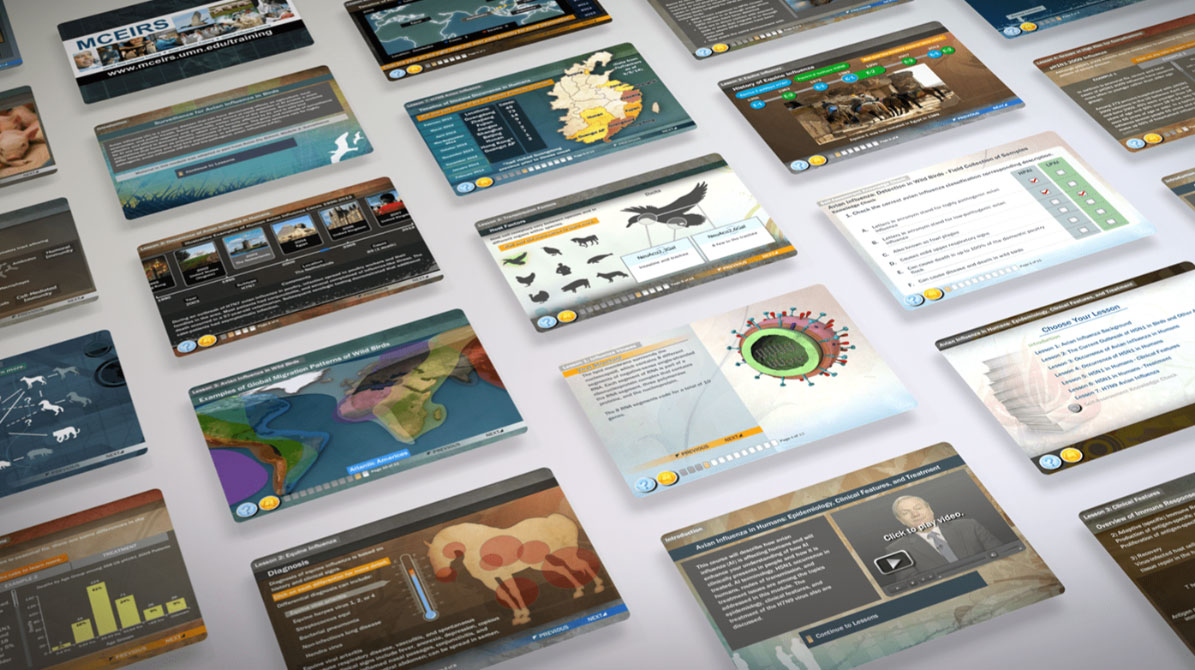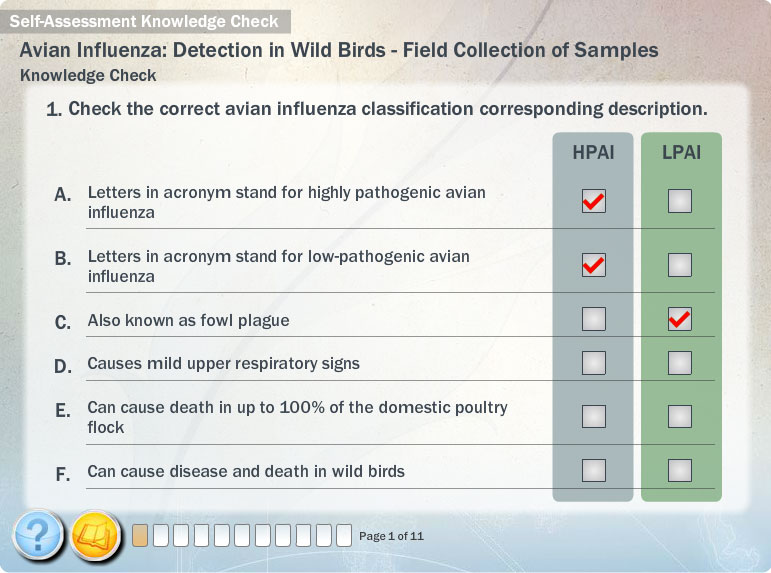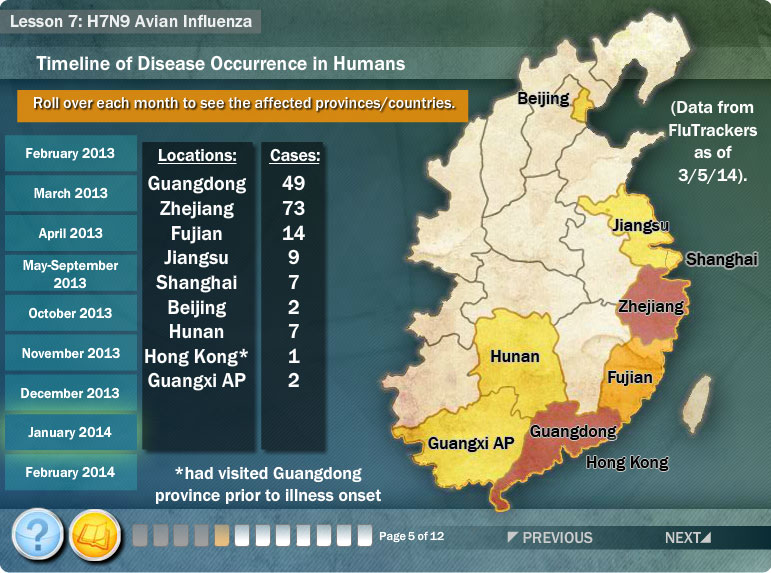Interactive Training Modules for Avian Influenza Surveillance
A Product Design and UX Case Study by Brendan Stern

Project Overview
Client: This project involved close collaboration with the University of Minnesota, Minnesota Center of Excellence for Influenza Research and Surveillance (MCEIRS), the Center for Infectious Disease Research and Policy (CIDRAP), and its lead epidemiologist, Dr. Michael Osterholm, a nationally recognized epidemiologist.
Goal: To create interactive training modules that educate doctors, nurses, students, and other professionals on the diversity, reassortment, and transmission of influenza viruses, including the 2009 pandemic H1N1 virus. The modules needed to evaluate user knowledge, offer university course credit, and allow for seamless translation and updates.
This project spanned nine years, with full and part-time work from February 2009 to March 2018.
My Role
- UX Design: Created wireframes, prototypes, and information architecture.
- Project Management: Collaborated with stakeholders and led a multidisciplinary team of developers, designers, and videographers.
- Interactive Development: Designed interactive elements, quizzes, and media-rich content.
- Team Leadership: Hired and managed additional programmers and videographers to ensure project success.
- Creative Direction: Created the user interface for over 800 pages of content.
- Provided ongoing UX design, project management, and updates for the modules throughout the nine-year project lifecycle.
The Challenge
- Audience Diversity: Training materials had to accommodate a wide range of users, including doctors, nurses, students, wildlife professionals, veterinarians, government workers, and researchers.
- Knowledge Evaluation: Modules had to test users’ understanding and provide results that could be used for academic credit.
- Translation and Accessibility: Content needed to be adaptable for international workers and easily updated for new research or additional languages.

Our Solution
We delivered 14 interactive training modules, encompassing over 800 slides tailored to the client’s needs. Each module featured:
- Interactive Interfaces: Engaging user interactions, including drag-and-drop tasks, clickable elements, and quizzes.
- Media-Rich Content: The use of videos, 3D visuals, graphics, and maps to enhance understanding.
- Tailored Experiences: Customized content for different user groups, ensuring relevance and engagement.
- Knowledge Checks: Quizzes integrated at the end of each module to assess user comprehension and record results.
- Adaptability: XML-based code for quick updates and translations.

UX Design Process
Research & Strategy
Worked with Dr. Michael Osterholm to align the training modules with the latest research on influenza diversity, reassortment, and transmission. Collaborated with stakeholders, including the medical director and content strategists, to define objectives and user needs. Conducted user persona research to ensure relevance for various professional groups.

Wireframing & Prototyping
Designed wireframes and low-fidelity prototypes to outline user flows and interface layouts. Iteratively refined designs based on client feedback.
Content Creation
Developed interactive elements, quizzes, and visuals. Ensured a consistent, user-friendly design that aligned with the project’s educational goals.
Testing & Feedback
Conducted user testing with sample audiences to validate the usability and effectiveness of the modules. Incorporated feedback to enhance clarity and engagement.
Implementation & Delivery
Delivered the final modules, accompanied by XML code for future edits. Provided training to the client’s team for ongoing updates.
Key Results
- Delivered 14 interactive modules on budget and on time.
- Enabled content customization for diverse audiences, including international workers and field professionals.
- Facilitated knowledge assessment with robust quiz functionality.
- Maintained and updated the modules over nine years, ensuring content remained current and impactful.
"I very much enjoy working with you, and the quality of your work is always excellent!"

Medical Director
CIDRAP
"The modules are amazing and truly professionally done!"

Training Coordinator
MCEIRS
Takeaways
This project highlighted the importance of user-centered design in educational tools. Balancing technical requirements with engaging, accessible content ensured a successful outcome that met diverse user needs. The challenges of managing a large-scale, multi-year project emphasized the value of adaptability and effective collaboration.
Tools & Technologies Used
- Pen and Paper wireframes and designed interaction templates.
- HTML, CSS, XML and Flash for dynamic and update-friendly content.
- Adobe Creative Suite for graphics and visuals.
- Microsoft Suite for feedback, validation, and data collection.